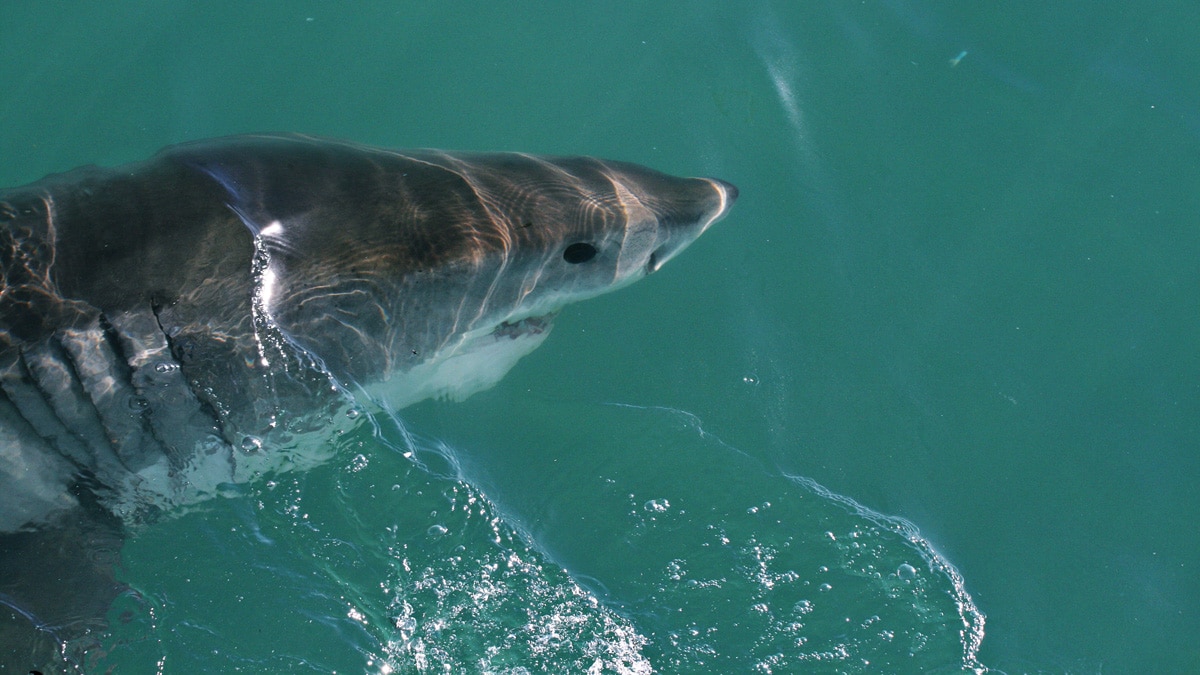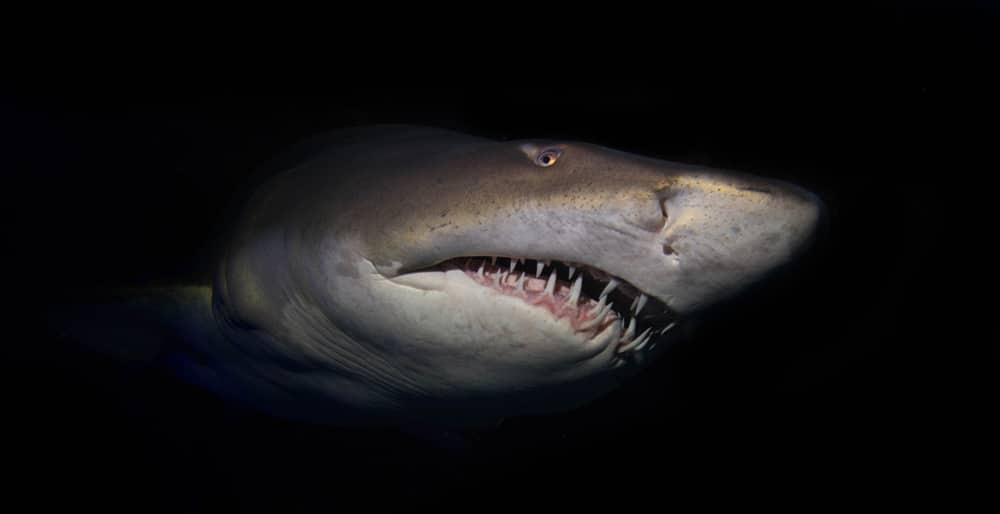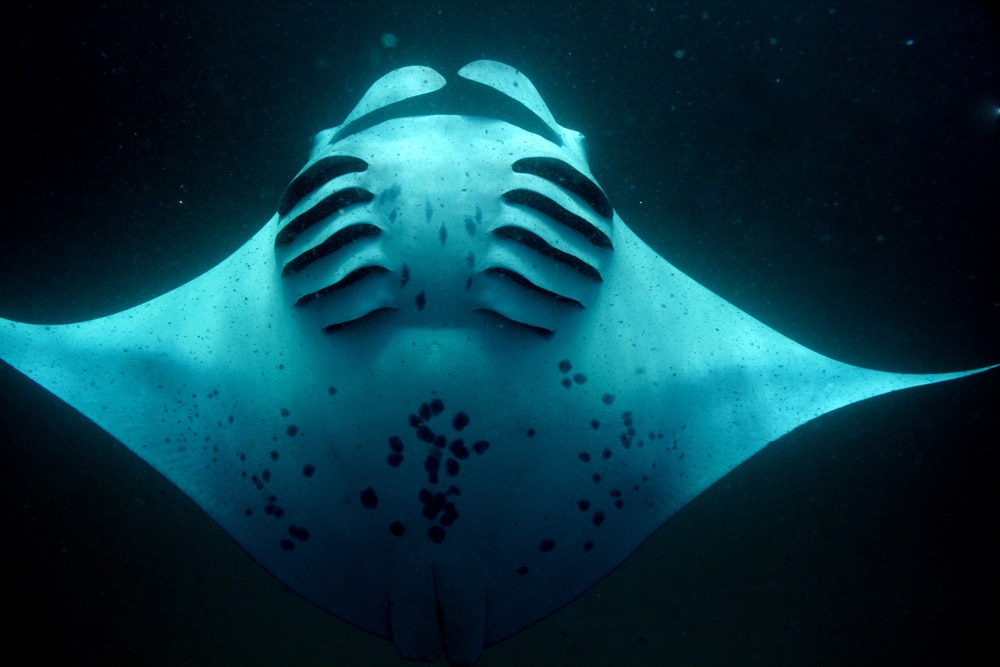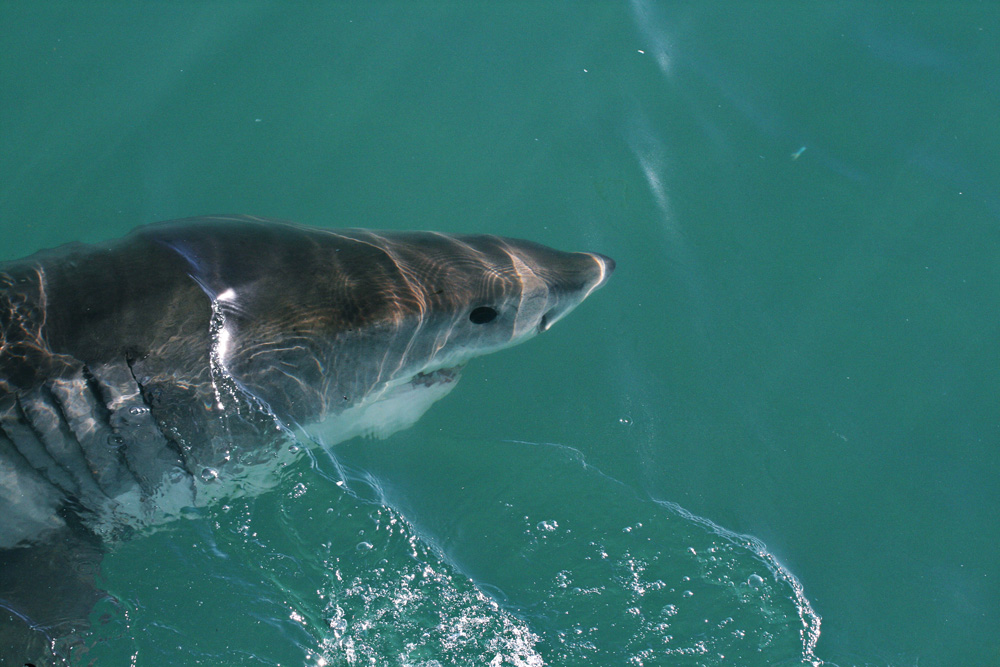Marine Life & Conservation Blogs
Sharks: The Oceans Greatest Mystery – Part 1

The word ‘Shark’ can instill a mixture of emotions in the human psyche, they are referenced in human cultures throughout the world, and stories of Sharks were commonplace on the decks of Ships for millennia. They have been represented in myth as both powerful guardians and vicious villains, in the 16th Century sailors and whalers of the time referred to sharks as “Sea Dogs” and are referenced in the Bible as being manifestations of the devil, even the word Shark is translated from the German word Schurke which means “scoundrel”. However, in French Polynesian and Hawaiian cultures they are revered as powerful gods and guardians who watch over fisherman and their families.
With such huge differences in how we view them, it is no wonder how inaccurately Sharks are portrayed in modern day media, therefore throughout this three-part blog series I am hoping to help you to better understand what a Shark truly is, and I will be covering subjects such as: What is a Shark? What we know and what we do not know about them, what is threatening them, and how we can be better ambassadors to Sharks worldwide.
What is a Shark?
In this first blog I want to give you a better idea as to what a Shark is and how they have become our oceans top predator. What a lot of people think of when they first imagine a shark is that they have sharp teeth and tend to always have ominous music following wherever they go, however there is much more to these animals than their teeth. Recent discoveries have shown that the Greenland Shark can live to be up to 500 years old, and the Bonnethead Shark is the first known Omnivorous Shark where up to 60% of its diet consists of Sea Grass. These are just two of many recent exciting discoveries, and scientists predict that we are about to enter the golden age of Shark discovery!
Sharks are a part of the fish family, although they are part of a distinct group that separated from Bony fish around 306 million years ago. Early relatives of Sharks have existed on our planet for as far back as 400 Million Years, they have been around longer than Humans, Dinosaurs and even trees. Throughout time sharks have taken many shapes, sizes and forms, but all have one thing in common, the makeup of their skeleton. The skeletons of Sharks and their relatives (Rays & Ratfish) all have a skeleton made of cartilage which is the same substance as your ears and nose, this allows them more flexibility in their movements and gives them an edge over their prey by allowing faster turns and giving them access to tight spaces and crevices.
Sharks, like other fish, also have Hyostylic jaws which means that the upper jaw isn’t connected to the skull, this allows more movement and flexibility in their strike when hunting. Sharks are also accompanied by two additional senses compared to humans, they have a lateral line which allows them to detect movements over 100 metres away and can detect frequencies as low as 25 Hertz, they also have their Electroreceptors which can pick up minute amounts of electricity given off by their prey’s muscles, such as the heart, and Sharks use this to help find prey buried in the sand, or to help pick off individual fish in the dark.
When it comes to sharks and what they eat, the best way to sum it up would be to imagine that for every animal in our Earth’s Oceans, there will be Shark that is designed and capable of eating it. This means that Sharks have become an incredibly diverse group, and as it stands there are over 500 species of Sharks, which range from the 14-Metre-long Whale Shark, all the way down to the Dwarf Lantern Shark, which is the smallest known shark species and it can fit into the palm of your hand. In between these we have large species such as White Sharks that breach from the water whilst trying to capture Seals, and smaller species such as the Dark Shy Shark that curls into a doughnut and covers its eyes with its tail when it is startled.
Another interesting point about Sharks is that they have come up with many different ways of tackling prey and have specially adapted teeth that match their diet, Sharks that have very needle like teeth such as the Sand Tiger Shark or Mako feed mainly on fish or other slippery prey, if the teeth are large and triangular like those of the White Shark or Tiger, then they prey on larger animals such as marine mammals, and if the teeth are flat like that of Nurse Sharks or Port Jacksons it generally means they feed on hard shelled and tough animals such as Shellfish and Snails. Teeth are not the only adaptation Sharks have evolved to use to their benefit, their differences in body shape or design can also indicate to us the hunting techniques they use, a good example of this would be the Hammerhead Sharks, which use their unique shaped heads to pin their prey against the seabed.
Sharks are often thought of as cold blooded, however this isn’t true for all species, some Sharks, such as White Sharks and Makos, are able to warm their bodies a few degrees warmer than the water, Scientists have predicted this is caused by the movement of the muscles generating heat. This heat has most notably been found around the eyes and brain; this may be an adaptation to help their eyes and brain react faster whilst tracking prey during high-speed chases.
Are Sharks Maneaters?
Sharks have been negatively portrayed in the media for as long as we’ve been swimming in our oceans and it is only recently that we’re starting to discover the positive impacts of Sharks and just how important they are to our Oceans and our Planet. Sharks have been represented as maneaters, but in fact sharks are only accountable for an exceedingly small number of incidents relating to a Shark bite, Sharks are in fact more likely to avoid human interaction and encounters with wild Sharks are a lot rarer than you would once think. To put things into perspective you’re more likely to be killed by a falling coconut or vending machine than you are to be bitten by a shark.
Even the age-old myth that Sharks are attracted to Human Blood has been proven to be false, after it was recorded that Human Blood and other bodily fluids have no effect on a shark’s behaviour or heart rhythm, this is due to our blood having a higher iron content than that of their regular prey. Even the way we look and move doesn’t resemble the prey of Shark. But the question people always ask is why do Sharks bite if they do not view us a food item? This is due to Sharks curious nature, Sharks have to be curious to discover what is and isn’t edible and, in our case, when Sharks bite it tends to be very quick lasting mere seconds before it lets go of us and swims away this is due to the animal realising that we aren’t a part of its regular diet and releases us.
If you want proof that Sharks aren’t what media would have you believe just look for any image with a Sharks and Diver, Snorkeler, or Swimmer if the media or movies have any ounce of truth then these people would’ve been killed a long time ago but these images solidify how wrong we’ve been looking at Sharks throughout the years.
So that’s it, an introduction to the Oceans Greatest Mystery, I hope that you have a greater understanding into what a Shark actually is and to how fascinating this amazing group of animals are but stay tuned for the next entry in this series where we dive deeper into the strange world of Sharks and discuss what we do and don’t know about them.
Follow Donovan on Instagram at www.instagram.com/donovans_reefs
Blogs
Saba’s Plan for a Coral Comeback

Saba has an exciting new initiative to restore its coral reefs. This new project, running from 2024 to 2026, will focus on reviving key species in the island’s underwater ecosystems. With a collaborative team from the Saba Conservation Foundation (SCF) and Van Hall Larenstein (VHL) University of Applied Sciences, the project aims to restore both corals as well as sea urchins.
This initiative is centered around coral restoration, specifically reviving two essential coral species—staghorn coral (Acropora cervicornis) and elkhorn coral (Acropora palmata). By mapping parent colonies and using a technique known as coral gardening, SCF will create and maintain coral nurseries. These corals will eventually be outplanted at key reef sites around Saba to not only expand the number of coral colonies, but also provide essential fish habitat. The project focusses on installing coral nurseries, training staff with the newest techniques and starting with the restoration of key reef sites.

Reef Cleaners to the Rescue
It’s not just corals getting a makeover—this project also shines a spotlight on the essential role of grazers, particularly sea urchins. VHL is leading the charge on cultivating and restocking two key sea urchin species, West Indian sea egg (Tripneustes) and long-spined sea urchin (Diadema), known for their ability to keep algae in check. By removing algae, which are important competitors of corals, they help the coral to thrive. By restoring these “reef cleaners,” Saba’s project will give corals the breathing room they need to grow, setting the stage for a healthier, more balanced marine ecosystem.
From Tiny Urchins to Big Goals
The project will be funded as part of the Dutch Government’s Nature and Environment Policy Plan (NEPP) 2020-2030 for the Caribbean Netherlands, a comprehensive initiative aimed at conserving and restoring the unique natural environments of the Dutch Caribbean islands, including Saba, St. Eustatius, and Bonaire. This project is aiming for big milestones: build and maintaining coral nurseries, the expansion of urchin cultivation facilities, and the creation of a dedicated research center. By 2026, the project hopes to ramp up coral and grazer restoration, with the ultimate goal of extending these efforts across the Dutch Caribbean. By linking local initiatives to broader regional goals, Saba’s restoration project promises to leave a lasting impact on both the environment and the community.
Find out more about the DCNA at dcnanature.org.
Blogs
Reef-World marks two decades of marine conservation: strengthening impact amid coral reef threats

Empowering ocean stakeholders to tackle future challenges and ensure the survival of coral reefs and humanity
2024 marks the 20th Anniversary of The Reef-World Foundation’s tireless efforts for global coral reef conservation. The UK charity is the international coordinator of the UN Environment Programme’s Green Fins initiative, known as the leading voice in sustainable marine tourism. Today, Reef-World released its 2023-2024 Impact Report outlining a year of substantive growth and impact in its marine conservation programmes.

Impact Report Highlights:
- Impressive improvements in environmental behaviours to protect coral reefs by the marine tourism industry as the global participation of Green Fins increases.
- Continued capacity building for government and NGO staff to effectively manage marine tourism activities in Asia, Caribbean and Red Sea regions.
- For the first time in Green Fins’ 20-year history, tourism operators have achieved ‘Best Environmental Performer’ status by demonstrating the lowest possible environmental impact in their environmental assessments. In 2024, three dive operators achieved this challenging milestone.
- Significant increases in global participation of Reef-World’s innovative digital conservation tools.
- 138 Green Fins dive operator members achieved the strict threshold for PADI Eco Center recognition.
- Developed four new educational materials and translated two into 16 languages to support the marine tourism industry in achieving sustainability targets.
- Establishing a new Reef-World Development strategy and recruiting new roles – Development and Programmes Managers.
- Reef-World’s board welcomes new Chair and Trustees strengthening organisational leadership.

Reef-World started as a one-person mission to inspire and empower communities to act in conserving and sustainably developing coral reefs and related ecosystems. Today, the team of 12 continues to meet this mission by inspiring and empowering the global marine tourism community to be exemplary sustainability leaders by using the Green Fins guidelines and tools to simultaneously use and protect the world’s precious reefs.
In April 2024, the fourth global coral reef bleaching event was confirmed. Reef-World’s work has never been more urgent as the marine environment, and the benefits they provide humanity, continue to be eroded by global threats. The reduction of local threats, like those from the marine tourism industry, is an essential step to ensuring a future where coral reefs survive and continue to support the millions of people who depend on their ecosystem benefits. Reef-World’s work buys time for coral reefs and related ecosystems to be resilient to the impacts of global threats.
“Right now our corals are facing the greatest fight of their existence as the terrifying predictions of the steps towards their complete extinction are starting to come true. But all is not lost, reefs are resilient and they have existed on this planet for millions of years. We must take action now, to buy time for reefs by reducing threats facing them and allowing them to react and adjust to the changing environment they need to survive in.” – Chloe Harvey, Executive Director
Looking Forwards:
Like coral reefs, the Reef-World team needs to be resilient in the face of the complex challenges of the conservation sector. Reef-World has invested significantly in developing a Culture of Care to ensure the well-being of its team on a daily basis, continuing to be an exemplary employer to enable its team to best achieve the mission for coral reef conservation.
With the foundations of a Culture of Care and organisational development laid, Reef-World is emerging from the end of a natural organisation life cycle, that brings the challenges of growth and scale, stronger than ever. With a new strategy in place to generate much needed resources, Reef-World is excited for the opportunities to leap forward, continue to scale our impact and lean into new innovations and untapped opportunities for marine conservation.
We continually strive to become a forward-thinking organisation that delivers on our goals and commitments to our stakeholders with fresh approaches and not being afraid of steering away from a “normal approach.” This approach is not only applied to our programmes of work but also internally and carries over to our Culture of Care for our team.” — JJ Harvey, Operations Director

The Reef-World Foundation is immensely grateful for the continued support of its grant funders: UN Environment Programme, IUCN’s Blue Natural Capital Financing Facility, Adventure Travel Conservation Fund, PADI Aware Foundation, and World Nomads Footprints Program.
Reef-World would also like to express its gratitude to international partners whose vital support has resulted in significant tangible benefits for our work and mission: PADI; Professional SCUBA Schools International (PSS); Explorer Ventures; 1% for the Planet; ZuBlu; Snorkel Venture, GSTC; Dive O’Clock; Seven Dragons; DiveAssure and Eco Beach, without whom these achievements would not be possible.
The full 2023–2024 Annual Impact Report is available on Reef-World’s website.
-

 News2 months ago
News2 months agoIconic SS United States to become the World’s Largest Artificial Reef
-

 News3 months ago
News3 months agoBook Review – 52 Assignments: Underwater Photography
-

 Gear News3 months ago
Gear News3 months agoDYNAMICNORD – New German diving brand enters the British market
-

 News3 months ago
News3 months agoExploring Cenote El Pit: A Diver’s Dream
-

 Gear News3 months ago
Gear News3 months agoTry BARE drysuits (and maybe even win one!) this Friday with Sea & Sea at North West Dive Fest
-

 Marine Life & Conservation3 months ago
Marine Life & Conservation3 months agoBook Review: Coral Triangle Cameos
-

 Blogs2 months ago
Blogs2 months agoDive the Egyptian Red Sea this Autumn with Regaldive
-

 News3 months ago
News3 months ago2024 Ocean Art Underwater Photo Competition Announced


















